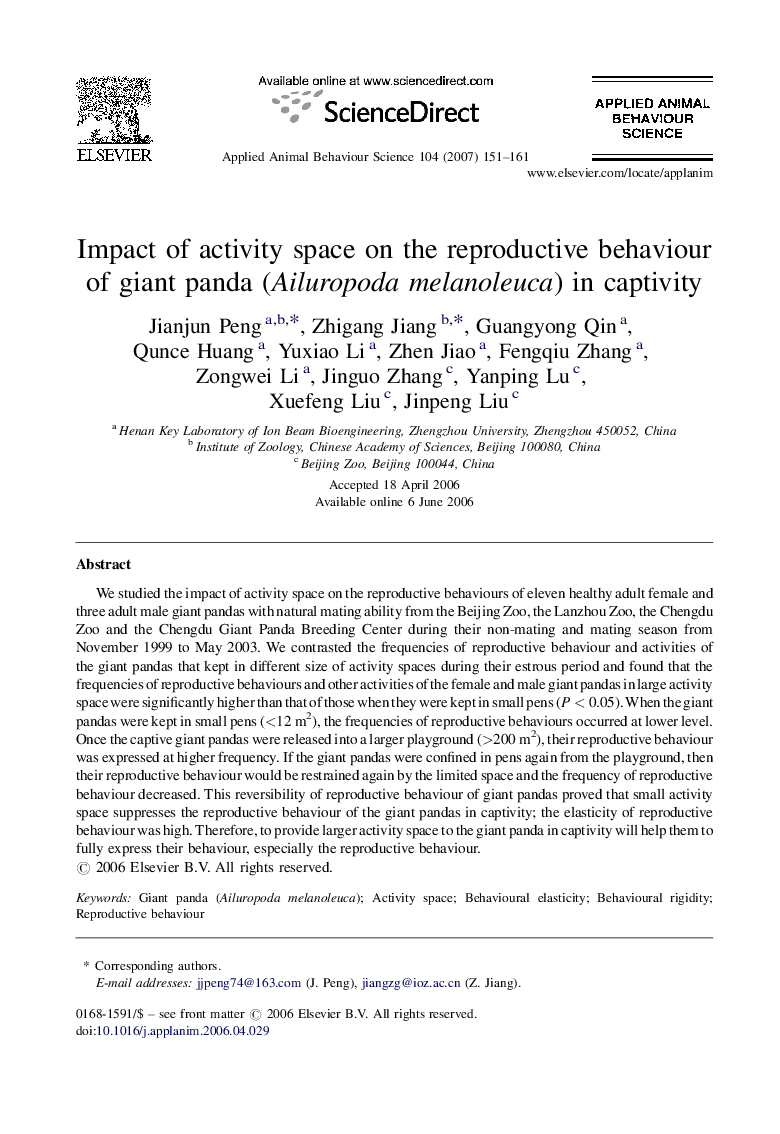| Article ID | Journal | Published Year | Pages | File Type |
|---|---|---|---|---|
| 6379840 | Applied Animal Behaviour Science | 2007 | 11 Pages |
Abstract
We studied the impact of activity space on the reproductive behaviours of eleven healthy adult female and three adult male giant pandas with natural mating ability from the Beijing Zoo, the Lanzhou Zoo, the Chengdu Zoo and the Chengdu Giant Panda Breeding Center during their non-mating and mating season from November 1999 to May 2003. We contrasted the frequencies of reproductive behaviour and activities of the giant pandas that kept in different size of activity spaces during their estrous period and found that the frequencies of reproductive behaviours and other activities of the female and male giant pandas in large activity space were significantly higher than that of those when they were kept in small pens (PÂ <Â 0.05). When the giant pandas were kept in small pens (<12Â m2), the frequencies of reproductive behaviours occurred at lower level. Once the captive giant pandas were released into a larger playground (>200Â m2), their reproductive behaviour was expressed at higher frequency. If the giant pandas were confined in pens again from the playground, then their reproductive behaviour would be restrained again by the limited space and the frequency of reproductive behaviour decreased. This reversibility of reproductive behaviour of giant pandas proved that small activity space suppresses the reproductive behaviour of the giant pandas in captivity; the elasticity of reproductive behaviour was high. Therefore, to provide larger activity space to the giant panda in captivity will help them to fully express their behaviour, especially the reproductive behaviour.
Related Topics
Life Sciences
Agricultural and Biological Sciences
Animal Science and Zoology
Authors
Jianjun Peng, Zhigang Jiang, Guangyong Qin, Qunce Huang, Yuxiao Li, Zhen Jiao, Fengqiu Zhang, Zongwei Li, Jinguo Zhang, Yanping Lu, Xuefeng Liu, Jinpeng Liu,
